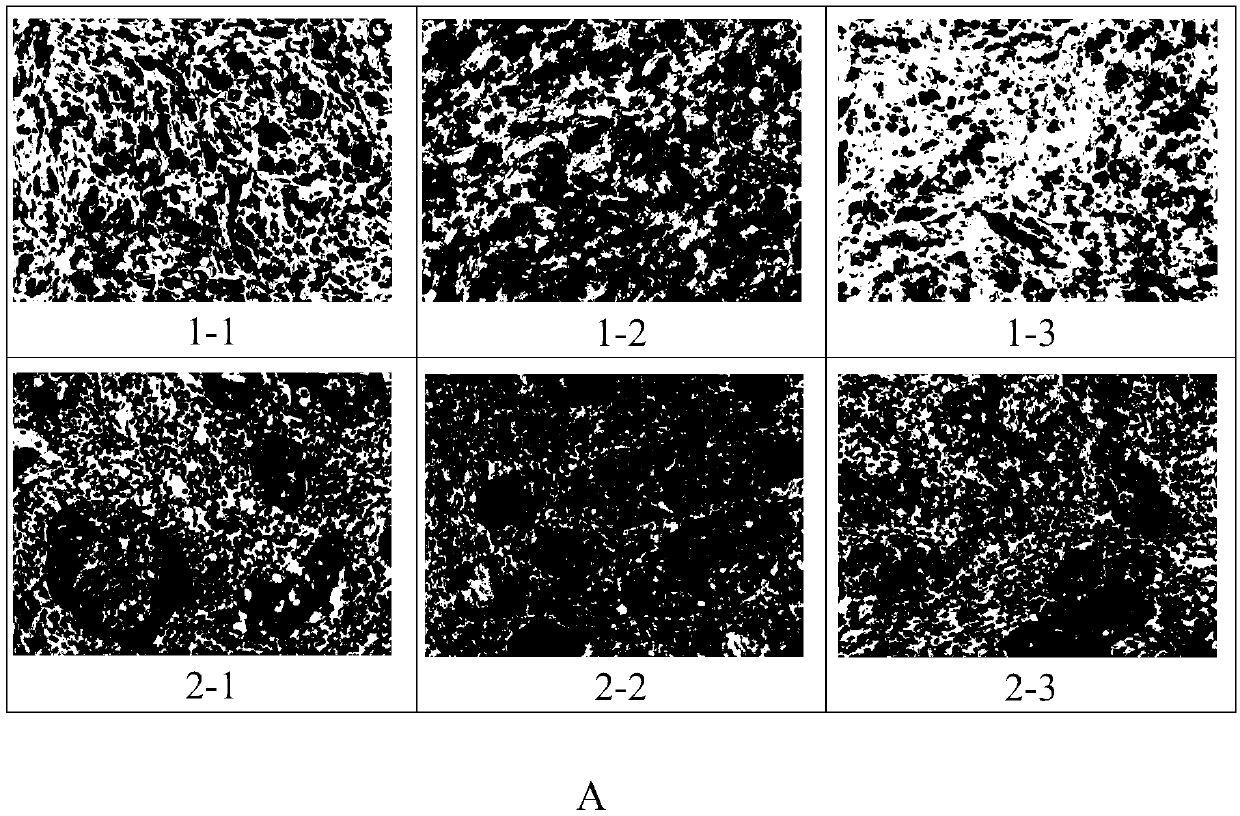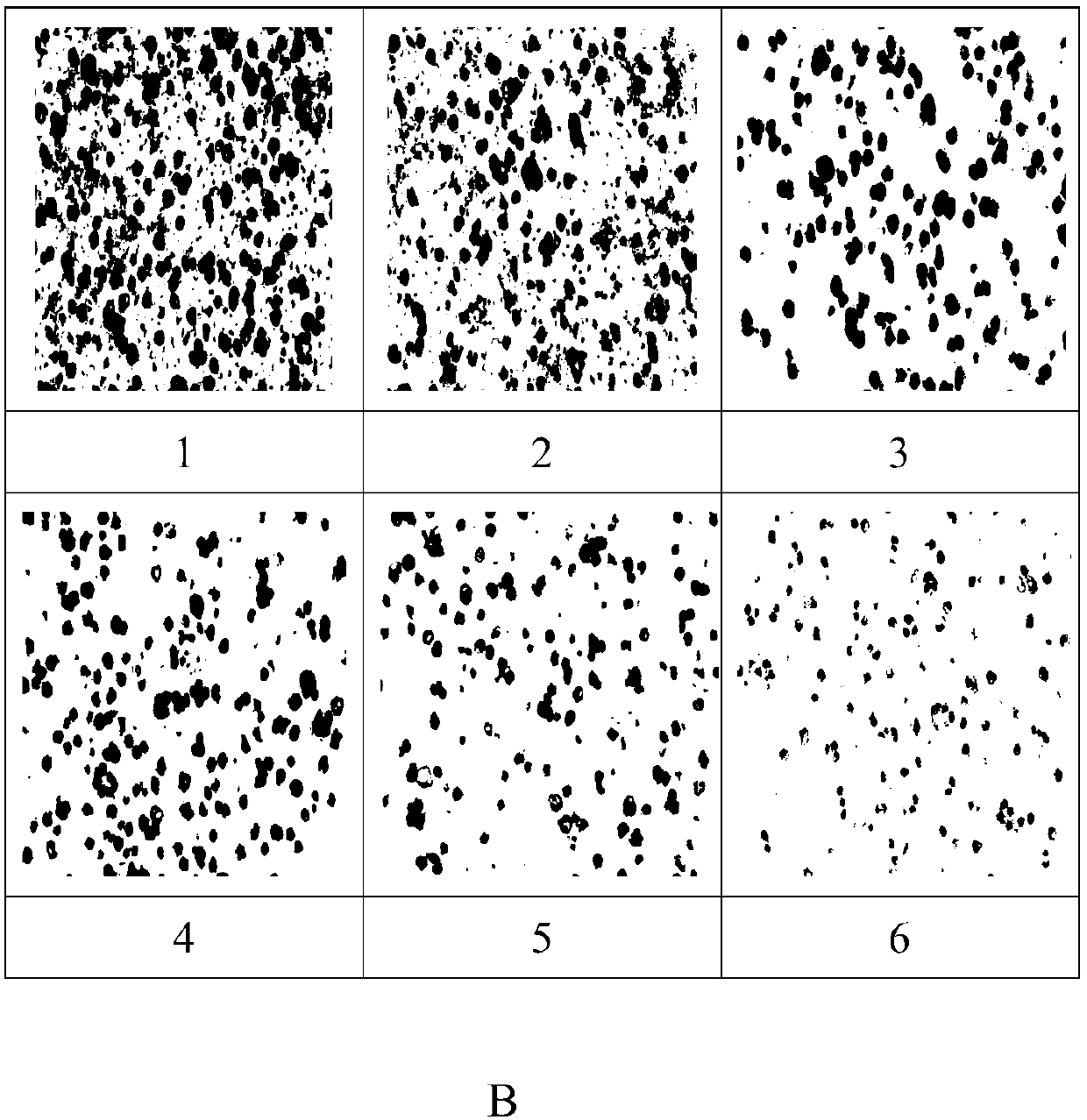Mesothelin immunohistochemical detection kit
An immunohistochemistry and kit technology, which is applied in the field of immunohistochemistry kits for detecting mesothelin
- Summary
- Abstract
- Description
- Claims
- Application Information
AI Technical Summary
Problems solved by technology
Method used
Image
Examples
Embodiment 1
[0051] Embodiment 1: Preparation of anti-MSLN monoclonal antibody
[0052] (1) Establishment of hybridoma cell lines
[0053] 1. Preparation of experimental materials:
[0054] The MSLN-ECD (Cat. No. FCL1589) protein fragment of G&P Biosciences was used as the immunogen. This fragment contains 317 amino acids and is located in the Glu296-Ser592 region of the MSLN (UniProt accession#Q13421, isoform 2) sequence; the medium used includes but is not limited to HAT, HT selection medium, DEME medium; experimental animals include Balb / c mice; adjuvants used are emulsified Freund's complete adjuvant and emulsified Freund's incomplete adjuvant.
[0055] 2. Animal immunization
[0056] Basic immunization: Equal volume of antigen and complete Freund's adjuvant are fully emulsified, subcutaneously injected at 50 μg / mouse, and 2 Balb / c mice are immunized.
[0057] Booster immunization: antigen emulsified with Freund's incomplete adjuvant; 3 days before cell fusion, direct intraperitonea...
Embodiment 2
[0068] Example 2: Optimization of Experimental Conditions for Anti-MSLN Monoclonal Antibody 3-2G6
[0069] (1) Antigen retrieval conditions were optimized by evaluating different antigen retrieval buffers. Restoration condition 1 (Cit6.0) refers to using acidic pH6.0 citrate buffer for high-pressure restoration for 2.5 minutes. Restoration condition 2 (Tris 9.0) refers to high-pressure restoration with alkaline pH9.0 Tris-EDTA buffer for 2.5 minutes. Repair condition 3 (Tryp) refers to repairing with 0.25% trypsin repair solution at 37° C. for 10 min. like figure 2 Shown in A: In these tested conditions, the staining effect of Cit 6.0 after high-pressure repair is better than that of other repair methods, specifically showing that the target cells (tumor cells) are clearly stained, and there is no non-specific staining of interstitial cells. Therefore, this method was finally selected as the antigen retrieval method suitable for this antibody.
[0070] (2) The staining in...
Embodiment 3
[0072] Embodiment 3: the selection of antibody diluent
[0073] We conducted a series of evaluations on the various components of the 3-2G6 antibody dilution, including matrix, salt ion concentration, pH value, protective protein concentration, surfactants, preservatives, etc.
[0074] In terms of matrix, use pH 7.4, 0.05M TRIS buffer and PB (Phosphate Buffer) as buffers to dilute 3-2G6 antibody for immunohistochemical experiments, according to image 3 The result of A shows: the use of Tris buffer makes non-specific background staining very obvious;
[0075] In terms of salt ion concentration, after adding 0.015-1.2M NaCl to 0.05M TRIS and PB buffer respectively, it was found that as the ion concentration increased, the non-specific staining disappeared, and when the ion concentration increased to above 0.15M, the specific staining intensity also increased. Then lower. Under the premise of other conditions being the same, too high salt ion concentration will lead to a decre...
PUM
| Property | Measurement | Unit |
|---|---|---|
| concentration | aaaaa | aaaaa |
Abstract
Description
Claims
Application Information
 Login to View More
Login to View More - R&D
- Intellectual Property
- Life Sciences
- Materials
- Tech Scout
- Unparalleled Data Quality
- Higher Quality Content
- 60% Fewer Hallucinations
Browse by: Latest US Patents, China's latest patents, Technical Efficacy Thesaurus, Application Domain, Technology Topic, Popular Technical Reports.
© 2025 PatSnap. All rights reserved.Legal|Privacy policy|Modern Slavery Act Transparency Statement|Sitemap|About US| Contact US: help@patsnap.com



